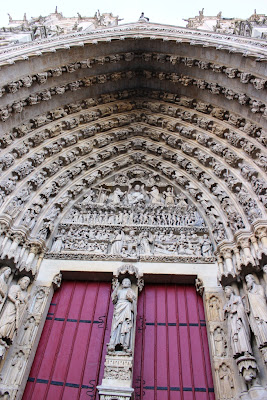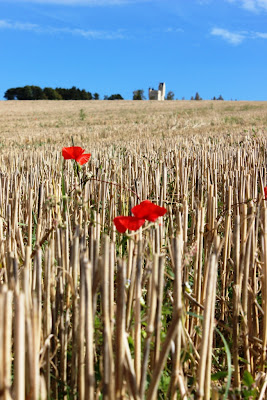 |
| The controversial marmite Christmas decoration in Oxford St |
And so we come to the end of London 2012, a very big year for this city and a very big year for the Strutts and the Eldridge!
As you have seen from our posts, we have been and seen and done so many things:
New Year saw us in Seville and Cordoba, followed by Dover Castle and tudor coastal fortresses, plus the first Roman settlement in Britain, Richborough.
 |
| Regent St Christmas crowds - madness! |
February had us up in Chester delving into the amazing Roman history of that city and the kids off on a skiing trip to the French Alps, then a trip to Manchester and surrounds.
 |
| Captivated by Selfridges Christmas windows |
Sally went to Berlin for work in March then all of us trained it to Brugges in Belgium followed by our wonderful Easter in Italy. In April we had a great weekend away with Sally's brother Tim, wife Andrea and daughter Caitlin in Cambridge then headed to Paris in early May for more fun.
While we had a bit of a hiatus for the next couple of months as Sally had and recovered from her surgery, the family were not to be stopped! Aisha excelled in exams held in the week Sally was in hospital, headed off to guide camp and kept up her weekly conservation work at Coppett's Wood, undeterred by her big accident. William had friends over, did sleepovers and birthdays, blitzed it in school athletics races and played lots of soccer in the local park.
 |
| Trafalgar Sq Christmas tree |
 |
| A December morning by the Thames |
By July we were able to head to Paris for a very special Bastille Day birthday for our now teenage Aisha. Then followed an amazing two month summer of Olympics and Paralympics, interspersed with Battle Proms at Hatfield House; Shuttleworth Airshow Proms; a trip to Bristol for Mark and the kids joined by Sally at Valerie's in Somerset then on to Stonehenge, old Sarum and Salisbury; a weekend visiting Bletchley Park WW2 code breaking centre and indoor sky diving at Milton Keanes; a getaway lazy weekend at the Pridmore's cottage in Osmington, Dorset including a visit to Brownsea Island and the beautiful Dorset coast; and a return visit to Shakespeare Gardens by the Pridmores. More recently we've visited the Somme and had a lovely weekend in Suffolk.
 |
| Our early Christmas dinner |
We've made the most of the incredible variety of theatre and entertainment in London -Masterclass, Jazz in the Crypt of St Martin in the Fields, Big and Small (Cate Blanchett), Matilda, Spamalot, Much ado about nothing (Indian style|) and Goodnight Mr Tom to mention a few.
The kids have had their own incredible experiences too - school visits to the wonderful London museums, Lords Cricket Ground, the Royal Observatory, singing at the O2 Arena with the Young Voices concert, the Rose theatre for Shakespeare Girl Guide's events at Pax Lodge and summer camp, swim squad galas (with Will recently scoring his first wins!). William read a prayer at Westminster Abbey for the ANZAC Day service, while Aisha got her exciting invitation to Buckingham Palace. They have also teamed up together to challenge Bernard and Simon in the now infamous Bake Offs!
 |
| Bruce all decorated for Christmas! |
 |
| Bruce and his spruce!! |
Over the year we've shared our home and some great times with many friends and family - Uncle Dick and Aunty Joan; Ann and Dyanna; Nigel, Jane and Julian (plus Big J solo); Lyndall; Roley; Sally's brother Tim and family; Hugh, Rachael B, Lucy and Pete; Narelle (twice!); Sally's brother Chris and family; her mum Margaret; Chris and Neen; Rachael L and of course Wellington the long haired daschund for a fun and chewy10 days! Of course there have been regular visits from Aunty Mary who is our number one supporter and a special part of our family. Throughout the year, friendships with our wonderful neighbours and our London friends have grown too - they have become very dear to us.
As you know, cancer has been an unwelcome guest, making 2012 a tough year for us. But it has left behind many good things - Sally and Mark's 21 year relationship (celebrated on 12/12/12) tested and the better for it; our two wonderful children more resilient and understanding; deeper friendships that have seen us through some difficult times and a reminder, if ever we needed one, of you, the wonderful people in our lives; amazing support for Sally from her work and colleagues; the opportunity to meet and be cared for by some truly wonderful British (and one Aussie!) health professionals; some amazing reconstructive surgery (!); a deep sense of gratitude for the early diagnosis and the "all clear" only six months later; and above all a very powerful and tangible reminder of the important things in life.
 |
| Off to Marocco |
 |
| Merry Christmas from Number 10! |
London 2012 was always going to be a big year, and so it came to be for our family. At the end of our year, Mark and the kids have headed off to Morocco via Spain, Gibraltar and a Mediterranean crossing. Sally will join them for Christmas in Fez. We'll be home, via Marrakesh, in time to see in the New Year in London with friends. We are looking forward to a fabulous final year here with lots more adventures and stories to tell! We wish you all the very best for the Christmas season, a safe and relaxing New Year and a healthy, happy and peace-filled 2013.
Mark, Sally, Aisha and William xxxx























































